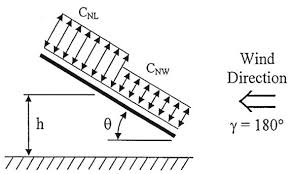
Simulating PV wind loading
| Project ID | 222a386d-2cc4-4127-8a6f-1dbb41e759e2 |
|---|
A simulation and optimization framework for managing wind-driven loading on PV systems
DuraMAT 2.0 Project
Multi-Scale, Multi-Physics Model
Category: Predictive Modeling
Recipient NREL (PI: Young, Ethan)
Subs None
Status Awarded
Abstract This project will develop an open source fluid-structure interaction model which can be used as part of a modeling chain to provide stressor inputs to mechanical module models to study the physics of failure for degradation mechanisms such as cell cracking, weathering of cracked cells, and glass breakage. A number of degradation mechanisms are excited by wind, and the associated movement of trackers it causes. Even relatively modest wind speeds can create the kind of buffeting pressure forces and reversing loads on the panel surface that lead to the worsening of existing cell cracks over time and eventually panel deterioration and reduced power output. Higher wind speeds and extreme weather events are associated with larger-scale forces and motions such as an aerodynamic instability known as torsional galloping which can initialize cracks in both cells and glass during singular wind events, potentially leading to the destruction of entire sections of the array. In an effort to enable the PV community to design durable panels and longer-life arrays, we will develop an open-source and high performance computing (HPC) simulation software to predict the cell and glass-cracking stresses experienced by a PV cell under a wide variety of weather, installation, and operation conditions and further optimize layout and design features to mitigate these wind-driven degradation mechanisms.
